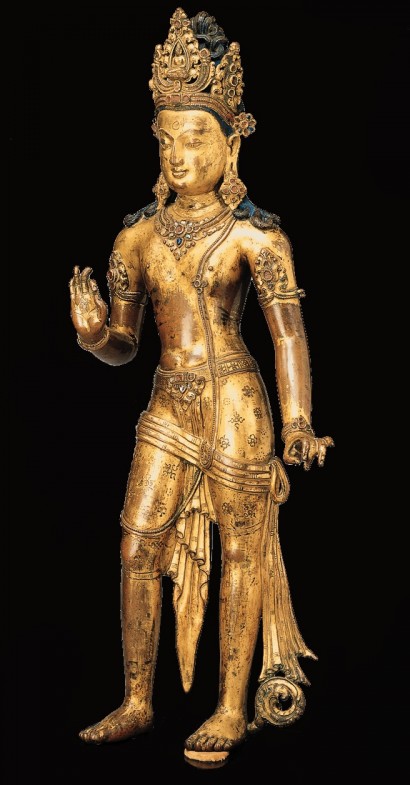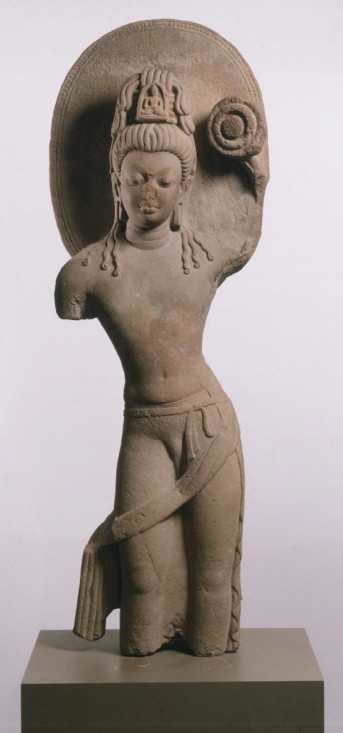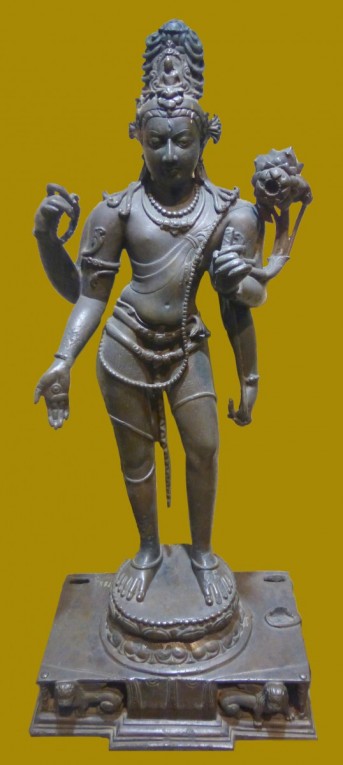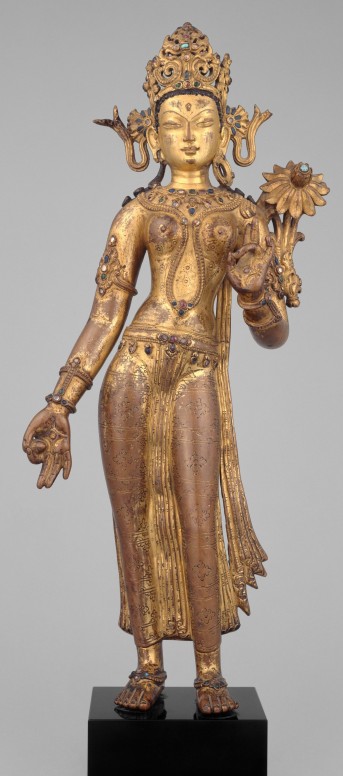Nepal, Transitional period, late 10th–early 11th century; gilt copper alloy with inlays of semiprecious stones; 26 3/4 x 11 1/2 x 5 1/4 in.; Asia Society, New York, Mr. and Mrs. John D. Rockefeller 3rd Collection, 1979.47, photo: Susumu Wakisaka, Idemitsu Museum of Arts, Tokyo, Courtesy of Asia Society, New York.
This Nepalese sculpture displays a rich, princely manifestation Padmapani, one of the most important forms of Avalokiteshvara. The ornamentation that adorns his body typifies the Himalayan style, and Buddha Amitabha seated within Avalokiteshvara’s crown identifies this bodhisattva. Despite the title Padmapani, however, the bodhisattva’s key attribute is missing – his characteristic lotus flower, or padma. The lotus was originally on the figure’s left, evidenced by an empty hand and armband that once secured the stalk. His right hand forms the teaching, or vitarka mudra, and the dharma wheel inscribed upon his palm emphasizes his wisdom. CF







